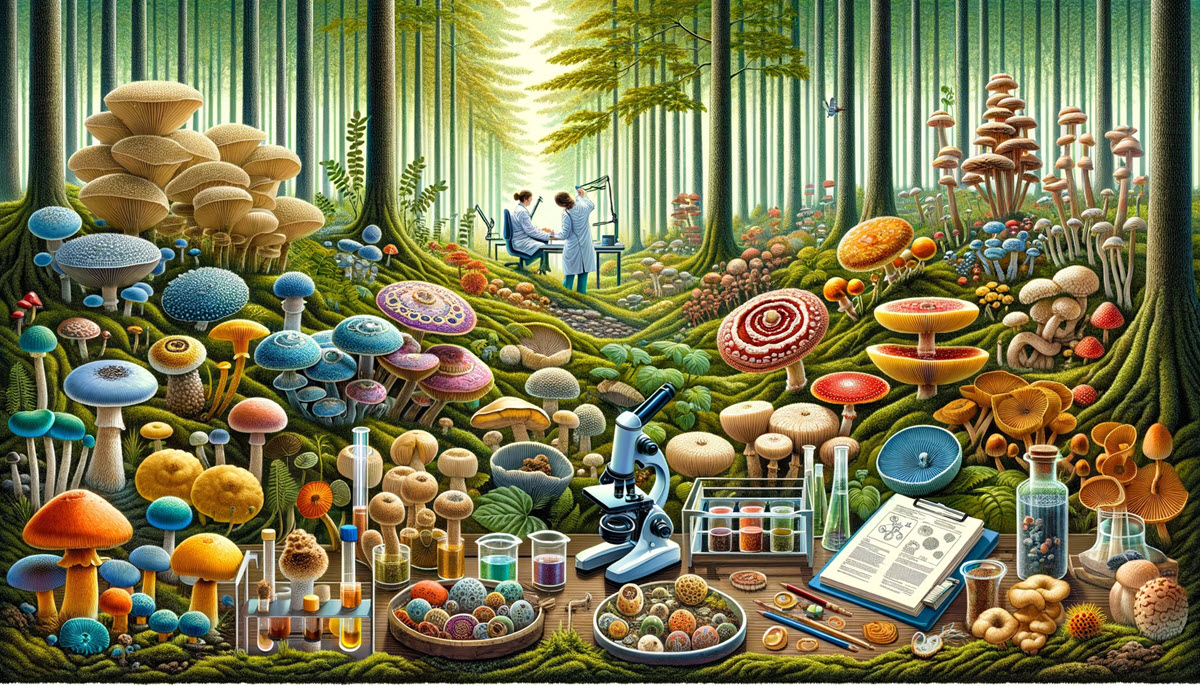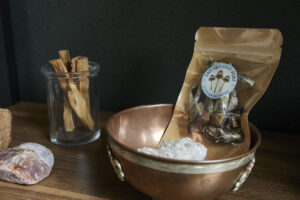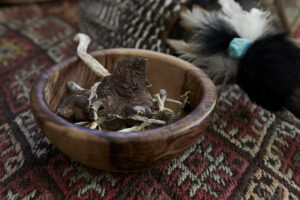Did you know that basidiomycota, a vast kingdom of fungi, accounts for approximately 34% of all fungal species on Earth? These organisms are not just mushrooms sprouting in your backyard; they play critical roles in our ecosystem, from decomposing organic matter to forming symbiotic relationships with plants. Diving into the world of basidiomycota opens up a realm where science meets mystery, revealing how these fungi influence everything from forest health to the food on our plates. Whether you’re a biology enthusiast or simply curious about the natural world, understanding basidiomycota is a journey worth taking. Let’s explore the fascinating features, such as cells and fossil evidence, and vital importance of these organisms, including fungus and rot fungi, together.
Key Takeaways
- Basidiomycota, also known as club fungi, play a crucial role in our ecosystem by decomposing organic matter, which underscores their ecological importance.
- They are diverse, with various subdivisions that have unique characteristics and life cycles, highlighting the complexity of this fungal group.
- Their lifecycle variations, including sexual and asexual reproduction, demonstrate the adaptability and survival strategies of Basidiomycota across different environments.
- Beyond their ecological role, Basidiomycota have significant potential in medicine, particularly through compounds like psilocybin, which is being explored for its therapeutic benefits.
- The Psilocybin Connection and Project Circle Psilocybin Service sections reveal the growing interest in psilocybin for mental health treatment, making it a promising area of research and therapy.
- For those considering psilocybin therapy, preparing for your consultation is critical to ensure safety and effectiveness, as highlighted by the success stories of individuals who have benefited from such treatments.
Understanding Basidiomycota
Classification Overview
Basidiomycota, a major phylum within the kingdom fungi, is known for its unique reproductive structures. This group, known as basidiomycetes, includes well-known fungi like mushrooms, puffballs, and shelf fungi, which all develop from a network of mycelium and hyphae. They stand out due to their complex lifecycle and the formation of basidia – specialized cells where sexual spores, known as basidiospores, are produced.
The phylum, which includes fungus and basidiomycetes known for their hyphae and rot fungi, is divided into various classes and orders, with Agaricomycetes being one of the most prominent. This class encompasses many mushrooms and toadstools. Basidiomycota’s distinguishing features include the presence of filamentous hyphae, which form a network called mycelium, and their method of reproduction through basidiospores.
Key Genera
Among the diverse fungal species in Basidiomycota, Amanita and Ganoderma are two of the most studied genera. Amanita, a basidiomycetes, includes species like the deadly Amanita phalloides, while Ganoderma, known for rot fungi species with medicinal properties, produces spores on structures called basidia and is often amber in color.
These genera play crucial roles in ecosystems by decomposing wood and other organic matter. Their global distribution showcases the adaptability and ecological significance of basidiomycetes. The diversity within these genera highlights the vast range of forms and functions in this phylum, including fossil rot fungi preserved in amber.
Typical Lifecycle
The lifecycle of Basidiomycota, including rot fungi, is marked by an alternation of generations between haploid and dikaryotic stages, with fossil evidence supporting this process. Basidiospores germinate to form primary mycelium which then fuses to create dikaryotic hyphae. This stage is crucial for genetic recombination.
Environmental conditions such as humidity and temperature are essential for the lifecycle to progress. These conditions trigger the development of fruiting bodies from the dikaryotic mycelium, where basidiospores are eventually formed and released for reproduction.
Meiosis Explained
Meiosis in Basidiomycota occurs within the basidia during spore production, contributing significantly to genetic diversity among fungal species. This process differs from other fungi mainly in its location and timing within the organism’s lifecycle.
Triggered by specific environmental cues or developmental stages, meiosis ensures that each basidiospore carries a unique genetic makeup. This diversity is crucial for adapting to changing environments and resisting diseases or pests.
The Subdivisions
Agaricomycotina Insights
Agaricomycotina, a subclass within the Basidiomycota phylum, is home to the familiar mushrooms and toadstools. These organisms play crucial roles in their ecosystems, often acting as decomposers that break down wood and other organic material. This process not only recycles nutrients but also increases surface area for microbial activity.
Notable species within this group can range from the edible to the deadly. For instance, the well-loved button mushroom has a place in cuisines worldwide, whereas others, like Amanita phalloides (the death cap), are highly toxic. Their habitats vary widely, thriving in moist forests to grasslands, showcasing their adaptability.
Pucciniomycotina Features
Pucciniomycotina members are distinguished by their unique life cycles and structures. They predominantly act as plant pathogens, causing diseases that affect a wide range of crops. These fungi possess specialized cells that allow them to infect host plants and proliferate.
The economic impact of Pucciniomycotina on agriculture cannot be overstated. Diseases like wheat rust and soybean rust are caused by species within this subdivision. These afflictions lead to significant crop losses annually, emphasizing the need for effective management strategies.
Ustilaginomycotina Characteristics
Ustilaginomycotina is known for its role as smut fungi. These organisms infect plants, leading to the formation of galls or tumors which replace the normal tissue. They have a complex lifecycle involving both haploid and diploid stages, with the ability to produce spores that spread to new hosts.
Their impact on agriculture is profound, with crops like corn and barley often falling victim to smut infections. Control measures include crop rotation and resistant strains development but managing these pests remains challenging due to their resilient nature.
Lifecycle Variations
Rusts and Smuts
Rusts and smuts are both significant threats to agriculture, but they differ in their symptoms and the damage they cause. Rusts typically produce powdery orange or red spores on the surfaces of plants, leading to weakened growth and potentially death if untreated. On the other hand, smuts cause dark, sooty spores to form, often resulting in gall-like growths that can severely distort plant development.
Examples of devastating diseases include wheat stem rust caused by Puccinia graminis and corn smut brought about by Ustilago maydis. These diseases not only reduce yield but also affect the quality of the agricultural products.
For managing these pathogens, farmers rely on a combination of strategies. They might use resistant plant varieties, apply fungicides, or practice crop rotation to break the lifecycle of these basidiomycetes. Understanding the specific lifecycle of the pathogen is crucial for effective management.
Lifecycle Diversity
The lifecycles of basidiomycota exhibit remarkable diversity. This variation allows them to adapt to different environmental conditions and survival challenges. Some species have simple life cycles with a single host, while others undergo more complicated life cycles involving multiple hosts or stages.
Environmental factors such as temperature, humidity, and light play a significant role in influencing lifecycle stages. For instance, certain mushroom species will only produce fruiting bodies under specific temperature and humidity conditions. This sensitivity ensures that reproduction occurs at times most likely to support spore dispersal and germination.
Adaptations in lifecycle strategies are evident across basidiomycota. Some species have developed unique mating types that increase genetic diversity through sexual reproduction. Others can switch between sexual and asexual reproduction depending on environmental conditions. These adaptations help basidiomycetes survive under adverse conditions and exploit new ecological niches.
Ecological Impact
Environmental Roles
Basidiomycota fungi play a crucial role in ecosystems. They are master decomposers, breaking down complex organic materials like wood and leaf litter. This process releases essential nutrients back into the soil, supporting plant growth.
These fungi also form mycorrhizal relationships with plants. This symbiosis is vital for nutrient exchange between soil and roots, enhancing plant health and productivity. In forests, nearly 90% of trees rely on these connections to thrive.
The presence of basidiomycota significantly impacts ecosystem health and biodiversity. By decomposing organic matter, they maintain soil fertility and structure. This not only supports diverse plant life but also a wide range of animal species that depend on healthy vegetation.
Symbiotic Relationships
Basidiomycota form symbiotic relationships with plants through mycorrhizae. These connections are beneficial for both parties. Fungi receive sugars produced by photosynthesis from plants. In return, they enhance water uptake and nutrient absorption for their hosts.
These relationships are crucial for the survival of many plant species, especially in nutrient-poor soils. They help plants resist pathogens and survive harsh conditions by improving their stress tolerance.
Examples include the relationship between fungi like Amanita and forest trees such as oaks and pines. Another example is the orchid mycorrhiza, where basidiomycota fungi assist in the germination and nutrition of orchid seeds, which lack enough energy reserves to grow on their own.
Basidiomycota in Medicine
Psilocybin Potential
Certain basidiomycetes, known for producing psilocybin, have drawn significant attention. These fungi belong to a unique class that has been intertwined with human culture for centuries. Historically, indigenous communities revered these mushrooms for their psychoactive properties, using them in spiritual and healing rituals.
Research into psilocybin’s applications is burgeoning. Scientists are uncovering its potential to treat a range of psychological issues. This interest marks a resurgence in the study of psychedelic substances, once sidelined by regulatory constraints.
Therapeutic Uses
Psilocybin shows promise in treating mental health disorders such as depression and anxiety. Clinical trials have demonstrated its ability to produce significant improvements in patients with treatment-resistant conditions. These studies highlight the compound’s potential as a powerful therapeutic tool.
However, the use of psilocybin faces legal and societal hurdles. Its classification as a controlled substance limits research and clinical application in many regions. Despite these challenges, the therapeutic benefits of psilocybin are driving efforts to change legislation and public perception.
The Psilocybin Connection
Understanding Psilocybin
Psilocybin, a compound found in certain mushrooms, stands out for its unique chemical structure. This structure allows it to interact with the brain’s serotonin receptors. It alters perception, mood, and thought processes. Unlike other psychoactive substances, psilocybin offers a profound psychological experience. Its effects can vary significantly among individuals.
Safety is crucial when considering psilocybin use. While many find it less addictive than other substances, it’s not without risks. Side effects can include nausea, heightened emotions, and altered sense of time. Users should approach psilocybin with caution and awareness of its potential impact.
Psilocybin Therapy Benefits
The therapeutic potential of psilocybin is gaining attention. Studies suggest it could help reduce anxiety and depression symptoms. This is especially true for those who haven’t found relief through traditional treatments. The benefits could be life-changing for some.
Long-term impacts on mental health look promising as well. Patients report lasting improvements in well-being and outlook on life after therapy sessions involving psilocybin. These changes often persist long after the substance has left their system.
Patient testimonials underscore the effectiveness of psilocybin therapy. Many describe experiencing significant emotional breakthroughs and reductions in mental health symptoms. These stories add a personal touch to the clinical data, highlighting real-world impacts.
Project Circle Psilocybin Service
Service Overview
Project Circle offers a unique approach to psilocybin therapy. They cater to individuals looking to explore the therapeutic benefits of psilocybin. The services include personalized sessions, guided by professionals with extensive experience in psychology and psychedelic therapies.
The team consists of licensed therapists and experts in mental health care. They have undergone rigorous training in psychedelic support. This ensures a safe and supportive environment for clients throughout their journey.
Support extends beyond the sessions themselves. Clients receive preparation guidance, integration support, and continuous care. This holistic approach aims to maximize the therapeutic potential of psilocybin.
Booking a Consultation
To begin exploring psilocybin therapy with Project Circle, booking a consultation is the first step. It’s straightforward. Visit their website and fill out a contact form. Then, you’ll be invited to schedule an initial call.
Before the consultation, consider what you hope to achieve through therapy. Prepare any questions about the process, potential outcomes, and concerns you might have. This will help tailor the session to your needs.
Confidentiality is paramount at Project Circle. They adhere strictly to ethical guidelines to protect client information. Your privacy and trust are their top priority during every stage of the consultation process.
Preparing for Your Consultation
What to Expect
During your first psilocybin therapy session with Project Circle Psilocybin Service, you’ll enter a carefully designed environment. The setting aims to promote comfort and safety. Therapists play a crucial role here. They prepare you for the journey ahead, ensuring you feel supported at every step.
The structure of the therapy session is tailored to individual needs. It begins with an open discussion about your mental health and personal goals. This conversation helps tailor the experience to what you hope to achieve. Therapists guide this process, drawing on their expertise to set the stage for meaningful insights and healing.
Personal goals and mental health needs are central to the therapy. The initial consultation focuses on understanding these aspects deeply. This ensures that the therapy aligns with your aspirations and challenges, making it a truly personalized experience.
Making the Most of It
To maximize the benefits of psilocybin therapy, there are several steps you can take. First, setting clear intentions for what you wish to explore or resolve during your session is vital. These intentions act as a compass throughout your journey.
Maintaining an open mindset is equally important. Approach the session with curiosity and willingness to confront whatever arises. This openness can significantly enhance your experience, leading to profound personal growth.
Integration sessions are key in processing what you’ve learned during therapy. They offer a space to reflect on insights gained and integrate them into your daily life. These sessions help solidify changes, ensuring long-lasting benefits from the therapy.
Success Stories
Testimonials
People from all walks of life have turned to psilocybin therapy, seeking relief and answers that traditional treatments couldn’t provide. Their stories, rich in emotion and personal triumph, shine a light on the profound impact this form of therapy can have.
One individual recounts how, after years of battling severe depression, a single psilocybin session opened the doors to joy and hope again. They describe feeling an overwhelming sense of connection to the world around them, a sensation that had been absent for so long.
Another shares their journey through anxiety and how psilocybin therapy helped them uncover deep-seated fears. Through guided sessions, they learned to navigate these emotions, leading to significant reductions in their anxiety levels.
These testimonials offer not just hope but also a glimpse into the diverse outcomes possible with psilocybin therapy. They underscore the importance of considering alternative therapies for those who have found little relief elsewhere.
Transformative Experiences
The transformative experiences recounted by individuals post-psilocybin therapy are nothing short of remarkable. Many speak of profound personal growth and an enhanced sense of self-awareness that seemed unattainable before their sessions.
One person describes experiencing a “rebirth”—a complete overhaul of their perspective on life, relationships, and self-worth. This shift allowed them to break free from old patterns and embrace new ways of being.
Another talks about the clarity and direction they found after therapy. For years, decisions felt overwhelming and clouded by doubt. Post-therapy, they felt equipped with a newfound confidence to make choices aligned with their true desires.
Such stories highlight the critical role of support and guidance in navigating these transformative experiences. Therapists not only facilitate the session but also help individuals process and integrate these profound changes into their daily lives.
Final Remarks
Exploring the world of Basidiomycota opens your eyes to a kingdom of fungi with profound ecological, medical, and psychological implications. From their critical role in ecosystems to their emerging potential in medicine, particularly through psilocybin for mental health treatment, understanding these organisms offers invaluable insights. Your journey through their lifecycle variations, ecological impact, and the groundbreaking Project Circle Psilocybin Service highlights not just the scientific marvel they represent but also their tangible benefits to humanity.
Ready to dive deeper or take a step towards exploring psilocybin’s therapeutic potential? Preparing for your consultation is your next move. Remember, knowledge empowers choices. By educating yourselves about Basidiomycota and psilocybin’s possibilities, you’re opening doors to innovative treatments and a deeper appreciation of nature’s intricacies. Let’s embrace this wisdom and explore how it can enhance our lives and well-being.
Frequently Asked Questions
What is Basidiomycota?
Basidiomycota, also known as club fungi, encompasses a diverse group of fungi, including mushrooms, rusts, and smuts. They play crucial roles in ecosystems by decomposing organic matter and forming symbiotic relationships with plants.
How are Basidiomycota classified into subdivisions?
Basidiomycota are classified into several subdivisions based on their unique characteristics and life cycles. These include Agaricomycotina, Ustilaginomycotina, and Pucciniomycotina, each containing species with distinct ecological roles and morphologies.
What variations exist in the lifecycle of Basidiomycota?
Lifecycle variations among Basidiomycota include differences in their reproductive strategies, ranging from sexual reproduction with complex life cycles involving multiple spore types to asexual reproduction through simple spore release.
How do Basidiomycota impact ecosystems?
Basidiomycota significantly impact ecosystems by breaking down dead organic material, recycling nutrients back into the soil. They also form mycorrhizal associations with plants, enhancing nutrient uptake and contributing to plant health and growth.
Can Basidiomycota be used in medicine?
Yes, some Basidiomycota species produce compounds with medicinal properties. For example, certain mushrooms have been studied for their potential in boosting the immune system and fighting cancer.
What is the connection between Psilocybin and Basidiomycota?
Psilocybin is a compound found in certain Basidiomycota species, specifically psilocybin mushrooms. It has psychoactive properties and is being researched for its potential therapeutic benefits in treating various mental health disorders.
What should I expect during a Project Circle Psilocybin Service consultation?
Expect a thorough evaluation of your mental health needs and medical history. The consultation aims to determine if psilocybin therapy could be beneficial for you and to prepare you for what to expect during treatment.




